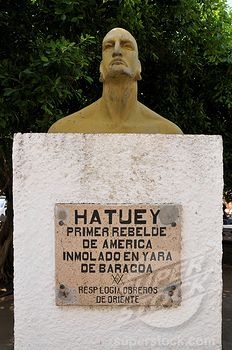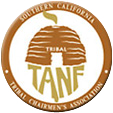By: William Loren Katz
2012 is the 500th anniversary of the death of Hatuey, one of the earliest American fightersagainst colonialism. Hatuey, a Taino Cacique, led his resistance in Hispaniola soon after Columbus and Spain’s invaders landed. His forces increased after 1502 when a fleet of 30 Spanish ships brought the new Governor Nicolas de Ovando ina search for Spain’s gold that included hundreds of Spanish soldiers and dozensof enslaved Africans. By 1503 Governor Ovando complained to King Ferdinand that his enslaved Africans “fled among the Indians, taughtthem bad customs, and could not be captured.” These last four words reveal more than the difficulty ofrecapturing runaways. Ovando is describing the formation of America’s firstrainbow coalition. Hatuey’s Taino followers and the Africans are embracing asallies.
By 1503 Governor Ovando complained to King Ferdinand that his enslaved Africans “fled among the Indians, taughtthem bad customs, and could not be captured.” These last four words reveal more than the difficulty ofrecapturing runaways. Ovando is describing the formation of America’s firstrainbow coalition. Hatuey’s Taino followers and the Africans are embracing asallies.
After almost a decade of fighting, in 1511 Hatuey and 400 of his followers climb into canoes and sailed to Cuba. Their plan was to mobilize Caribbean people against the slavery, misery and death unleashed by the European invasion.
In Cuba, the Dominican Priest, Father Bartolome De Las Casas, hears and reports Hatuey’s message: Hatuey tells how Spanish intruders “worship gold,” “fight and kill,” “usurp our land and makes us slaves” For gold, slaves and land “they fight and kill; for these they persecute us and that is why we have to throw them into the sea….”
In 1511 a Spanish army lands to prevent Hatuey and his followers from uniting with Cubans. But Hatuey’sguerilla strategy is successful for more than three months. The invaders are pinned down at their fort at Baracoa. Finally Spain’s overwhelming firepower defeats Hatuey’s fighters.
Hatuey is captured,Las Casas reports, but defiant to the end. Taken for execution on February 2,1512, Hatuey’s final act of resistance is recorded by Las Casas:
“When tied to the stake, the cacique Hatuey was told by a Franciscan friar who was present . . . something about the God of the Christians and of the articles of Faith. And he was told what he could do in the brief time that remained to him, in order to be saved and go to heaven. The Cacique, had neverheard any of this before, and was told he would go to Inferno where, if he did not adopt the Christian faith, he would suffer eternal torment, asked the Franciscan friar if Christians all went to Heaven. When told that they did he said he would prefer to go to Hell.”
Hatuey is the first documented American freedom fighter. Today a statue in Cuba celebrates him as the first American liberator. He was even more. By leading his people from one Caribbean island to another to fight colonialism, he is the first pan-American revolutionary. Hatuey and his multi-cultural fighters prepared the world for 1776, the revolution that established Haiti as a BlackRepublic in 1804, and prepared the road for liberator Simon Bolivar.
Hatuey first ignited the Americanspirit of liberty that circled the globe for the next five hundred years.
His story also changed LasCasas. As a Bishop he denounced his fellow Christians for their genocidal brutality, and declared the only true Christians in the Americas were the Indians.
To Purchase the Book:





